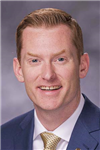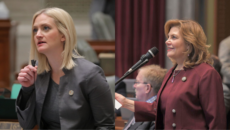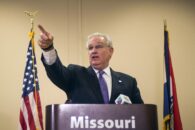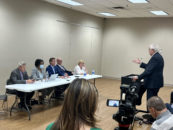Missouri is facing an immediate shortage of medical professionals. When COVID-19 drove hospitalization rates to record levels, Gov. Mike Parson announced a 12-week partnership with the health care firm Vizient to bring up to 760 additional nurses, respiratory therapists, and certified nurse assistants to the state.
However, this was only a temporary solution, and the legislature needs to make long-term, structural changes to expand health care capacity in the state — especially in rural areas. The Association of American Medical Colleges estimates that by 2033 there will be a nationwide shortage of nearly 140,000 doctors. In Missouri alone, the physician shortage is estimated to reach 3,100 by 2033.

The effects of this shortage will be worse in underserved rural areas. About one in five Missourians live in an area designated as experiencing a primary care shortage, and the state has the sixth-highest number of shortage areas in the U.S. While 37 percent of state residents live in rural communities, only 18 percent of Missouri doctors in the state practice in rural communities, leading to mounting hospital closures. As of 2020, 44 of Missouri’s 114 counties do not have a single hospital. Is it any wonder that rural residents face far worse health outcomes?
Even in the face of this physician shortage, Missouri’s current laws and regulations, specifically the mandate that internationally trained physicians from outside of Canada repeat their residency before working in the U.S., prevent highly qualified physicians from practicing in the state. This is a man-made crisis — there are thousands of highly-trained physicians throughout the country who are stuck in jobs far below their skill level. These individuals would welcome the chance to bring their skills to Missouri and get to work helping patients.
The deadly consequences of Missouri’s physician shortage are why I introduced a bill to allow the state board that regulates physicians to waive residency requirements for internationally-trained applicants who meet the state’s safety, competency, and conduct standards.
For a doctor who has already completed nearly a decade of medical training in another country, such as Australia, the United Kingdom, or Switzerland, there is little appetite to repeat and extend that process by three to seven years. Residency is notorious for lower pay, longer working hours, poorer working conditions, and more grueling assignments than are given to full physicians. Even if international physicians are willing to tolerate all these conditions, U.S. residencies are already highly competitive, regularly turning away qualified applicants. In 2020, there were nearly 45,000 qualified medical school graduates for only 37,000 residency positions. Those who completed their educational training abroad face even worse odds of landing a coveted residency spot.
Internationally-trained medical professionals have long helped supplement America’s medical workforce. More than 247,000 doctors, one-quarter of all those currently practicing in the U.S., earned their medical degrees abroad and 1.5 million immigrants are already employed in the U.S. health care system as doctors, registered nurses, and pharmacists. Internationally-trained physicians are disproportionately likely to work in underserved communities and as primary care practitioners, and must be viewed as integral to expanding health care capacity. And some of these workers are already close to home — more than 260,000 immigrants in the U.S. with degrees in health-related fields are being underutilized due to state restrictions.
To resolve this worsening physician shortage, Missouri can make greater use of medical talent from across the globe. As COVID made clear, the state legislature needs to give health care regulators the flexibility to meet patients’ needs and expand rural health care.

Rep. Derek Grier, a Republican, represents HD 100 in the Missouri House.


















